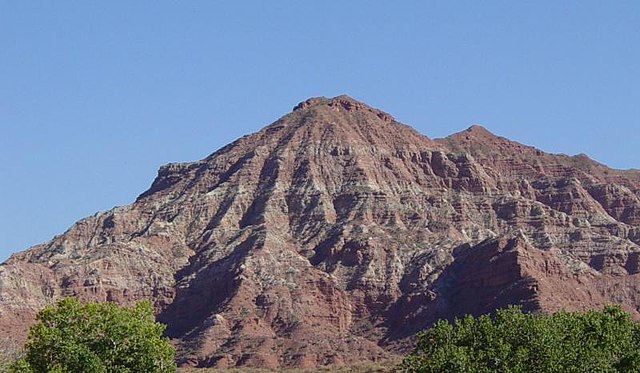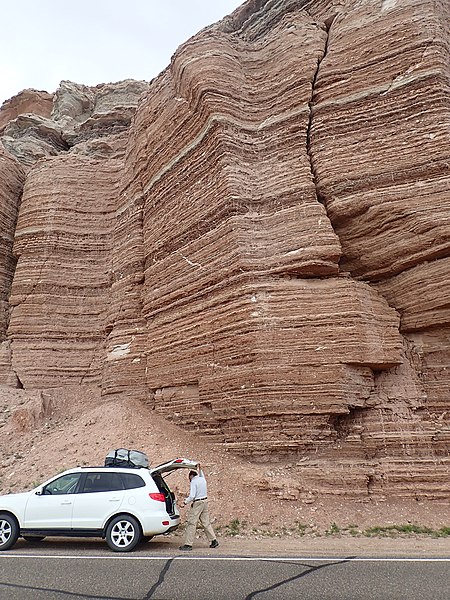The Moenkopi Formation is a geological formation that is spread across the U.S. states of New Mexico, northern Arizona, Nevada, southeastern California, eastern Utah and western Colorado. This unit is considered to be a group in Arizona. Part of the Colorado Plateau and Basin and Range, this red sandstone was laid down in the Lower Triassic and possibly part of the Middle Triassic, around 240 million years ago.
Moenkopi at its reference section along the Little Colorado River west of Cameron, Arizona
Rock layers of the Moenkopi Formation in Zion National Park
Moenkopi Wash in Coconino County, Arizona (1914).
Chimney Rock at Capitol Reef National Park
A geological formation, or simply formation, is a body of rock having a consistent set of physical characteristics (lithology) that distinguishes it from adjacent bodies of rock, and which occupies a particular position in the layers of rock exposed in a geographical region. It is the fundamental unit of lithostratigraphy, the study of strata or rock layers.
A geologic cross section of the Grand Canyon. Black numbers correspond to groups of formations and white numbers correspond to formations (click on picture for more information)
The Permian through Jurassic strata of the Colorado Plateau area of southeastern Utah demonstrate the principles of stratigraphy. These strata make up much of the famous prominent rock formations in widely spaced protected areas such as Capitol Reef National Park and Canyonlands National Park. From top to bottom: Rounded tan domes of the Navajo Sandstone, layered red Kayenta Formation, cliff-forming, vertically jointed, red Wingate Sandstone, slope-forming, purplish
Uluru (Ayers Rock) in Australia is underlain by the Mutitjulu Arkose, a formation composed almost entirely of a single lithology (arkosic sandstone).
The Summerville Formation is composed of alternating thin beds of two lithologies, mudstone and sandstone, penetrated by veins of a third lithology, gypsum.








